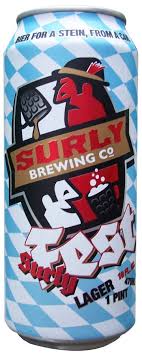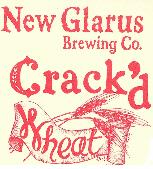August Schell Brewing Company is kicking off its 150th anniversary week this weekend with special deliveries to every New Ulm bar and liquor store. The deliveries will be made by Ted and Jace Marti, 5th & 6th generation descendents of the brewery’s founder August Schell. Hearkening back to the early days they will be making the rounds in a replica of their 1800’s beer wagon and a restored 1948 Flexible Clipper bus. Here’s what their press release has to say.
Schell’s Brewery will be making special ceremonial deliveries in its vintage 1800’s horse drawn beer wagon replica to kick off it’s declared 150th Anniversary week. A team of two horses will pull the beer wagon. The wagon will be lavishly decorated in garland and flowers, reminiscent to the extravagantly decorated beer wagons in Germany during its Oktoberfest celebrations. Schell’s will also be using their newly restored 1948 Flexible Clipper bus to make these deliveries. Schell’s will be delivering a commemorative gift to each of the bars and liquor stores in New Ulm as a special thanks to those organizations for helping the brewery reach its 150th Anniversary. Ted Marti, president of the August Schell Brewing Company and his son Jace Marti, the sixth generation, will be making these commemorative deliveries. Other members of the brewery will also be along helping with the deliveries.
I’ll continue my salute to Schell’s with tasting notes for Firebrick.
When I first moved to Minneapolis from Chicago in 2002, I was unfamiliar with the local beer scene (what there was of it at the time). Although I was very much into craft beer, I was also less familiar with beer in general than I am now. In Chicago I was able to buy beer in the grocery store. The selection was limited, but as I went there every week, I could easily pick up a sixpack whenever I was there. I almost never went to liquor stores in the years that we lived there.
Upon discovering that beer was unavailable in Twin Cities grocery stores, I made a trip to Zipp’s to see what I could find. It was like I had walked into heaven. Multiple coolers full of awesome beer. Feeling a bit overwhelmed, I grabbed a Schell’s sampler pack and beat a path home. I fell in love with these beers, especially Firebrick. For many months after the move, the Schell’s sampler pack sustained me beer wise.
Here’s my notes:
 Firebrick
Firebrick
August Schell Brewing Company, New Ulm, Minnesota
Style: Vienna Lager
Serving Style: 12 oz. Bottle
Aroma: Sweet toffee and bread crust that reminds me of German rye bread. Light spicy continental hops.
Appearance: Amber and clear. Moderate head persists moderately.
Flavor: Malt dominates the flavor profile with toffee, bread crust, and slight nuttiness. The bitterness balances without getting in the way of the malt. Spicy hop flavors. Finish lingers a bit on sweet toffee and bread crust. Crisp, clean lager character.
Mouthfeel: Medium-light body. Crisp with medium carbonation. A bit of creaminess.
Overall Impression: In the days when my beer appetite was sustained by the Schell’s sampler pack, Firebrick was my favorite Schell’s beer. It remains up there near or at the top. Delicious, luscious yet refreshing, easy to drink. I recently was in another city searching for a Vienna lager. Couldn’t find one. Wished I had Schell’s around.


 Hopfenmalz
Hopfenmalz Pils
Pils Zommerfest
Zommerfest




 I recently heard a
I recently heard a 


